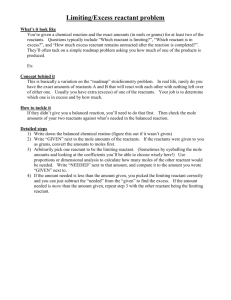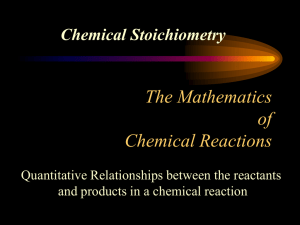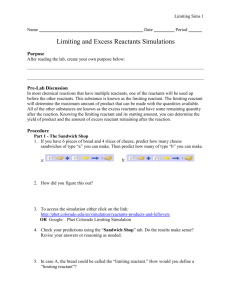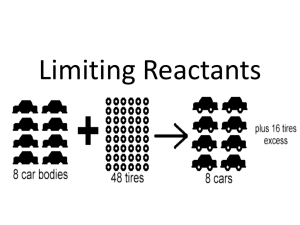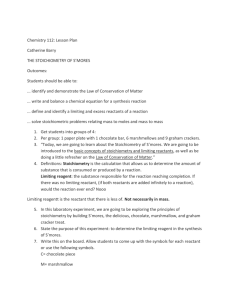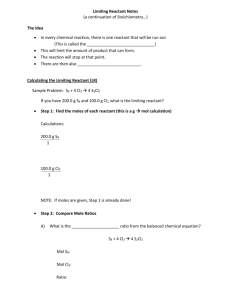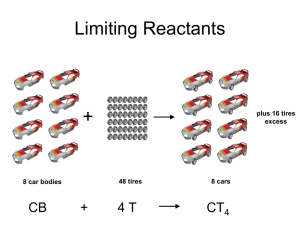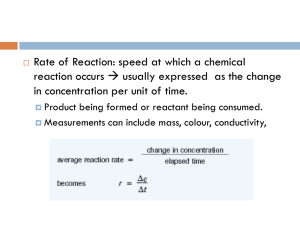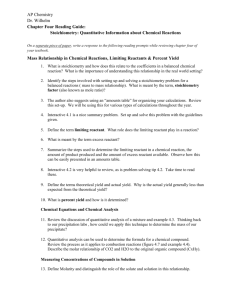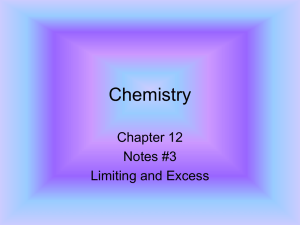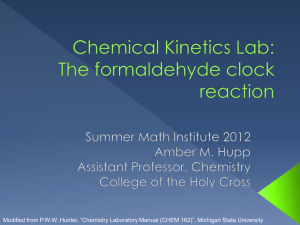Limiting Reagent
advertisement
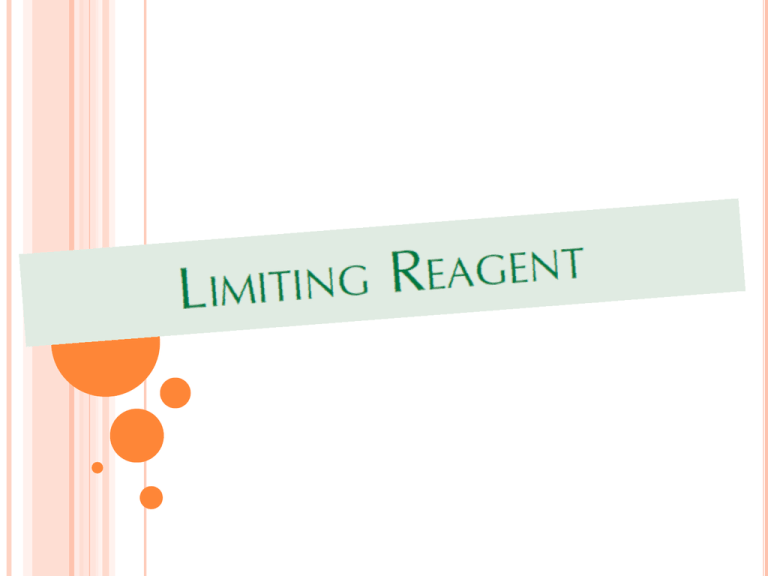
GRILLED CHEESE SANDWICH Bread + 2B + 100 bread Cheese C 30 slices ‘Cheese Melt’ B2C ? sandwiches CONTAINER 1 Zumdahl, Zumdahl, DeCoste, World of Chemistry 2002, page 269 BEFORE AND AFTER REACTION 1 Before the reaction After the reaction All the hydrogen and nitrogen atoms combine. Zumdahl, Zumdahl, DeCoste, World of Chemistry 2002, page 269 CONTAINER 2 Zumdahl, Zumdahl, DeCoste, World of Chemistry 2002, page 270 BEFORE AND AFTER REACTION 2 Before the reaction Zumdahl, Zumdahl, DeCoste, World of Chemistry 2002, page 270 After the reaction REAL-WORLD STOICHIOMETRY: LIMITING REACTANTS Ideal Stoichiometry Limiting Reactants LeMay Jr, Beall, Robblee, Brower, Chemistry Connections to Our Changing World , 1996, page 366 LIMITING REACTANTS aluminum + chlorine gas Al(s) + Cl2(g) AlCl3 2 Al(s) + 3 Cl2(g) 2 AlCl3 100 g A. 200 g aluminum chloride 100 g B. 125 g ?g C. 667 g D. ??? 1 cup butter LIMITING REACTANT: C OOKIES 1/2 cup white sugar 1 cup packed brown sugar 1 teaspoon vanilla extract 2 eggs 2 1/2 cups all-purpose flour 1 teaspoon baking soda 1 teaspoon salt 2 cups semisweet chocolate chips Makes 3 dozen If we had the specified amount of ingredients listed, could we make 4 dozen cookies? What if we had 6 eggs and twice as much of everything else, could we make 9 dozen cookies? What if we only had one egg, could we make 3 dozen cookies? LIMITING REACTANT Most of the time in chemistry we have more of one reactant than we need to completely use up other reactant. That reactant is said to be in excess (there is too much). The other reactant limits how much product we get. Once it runs out, the reaction s. This is called the limiting reactant. LIMITING REACTANT To find the correct answer, we have to try all of the reactants. We have to calculate how much of a product we can get from each of the reactants to determine which reactant is the limiting one. The lower amount of a product is the correct answer. The reactant that makes the least amount of product is the limiting reactant. Once you determine the limiting reactant, you should ALWAYS start with it! Be sure to pick a product! You can’t compare to see which is greater and which is lower unless the product is the same! Coming up next… STOICHIOMETRY APPLICATIONS Use a table to answer the questions
